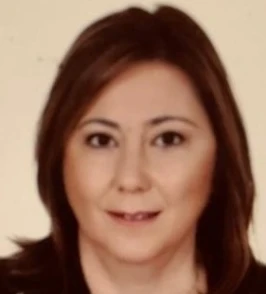2352 - Evaluation of Factors Affecting Radiological Changes and Treatment Response Following LUNG Stereotactic Ablative Radiotherapy
Presenter(s)

C. Barlas1,2, H. F. Dincbas1,3, S. Akyurek II4, B. Atalar5, A. Üçüncü Kefeli6, E. Korkmaz Kirakli7, S. Özdemir Dag8, N. Özbek Okumus9, A. N. Demiral10, N. Kaydihan3,11, S. Demir12, N. Alaoglu Balci4, B. Sahin Baris5, M. G. Aksu6, E. I. Cosgun Araz9, E. Ozkaya10, H. C. C. Yildirim13, and M. Saynak12; 1Istanbul University-Cerrahpasa, Cerrahpasa Faculty of Medicine, Department of Radiation Oncology, Istanbul, Turkey, 2Sivas Numune Hospital, Department of Radiation Oncology, Sivas, Turkey, 3Memorial Bahçelievler Hospital, Department of Radiation Oncology, Istanbul, Turkey, 4Ankara University Faculty of Medicine, Department of Radiation Oncology, Ankara, Turkey, 5Acibadem MAA University, School of Medicine, Department of Radiation Oncology, Istanbul, Turkey, 6Kocaeli University, Faculty of Medicine, Department of Radiation Oncology, Kocaeli, Turkey, 7Dr. Suat Seren Chest Diseases and Chest Surgery Training and Research Hospital, Department of Radiation Oncology, Izmir, Turkey, 8Yedikule Chest Diseases and Thoracic Surgery Training and Research Hospital, Department of Radiation Oncology, Istanbul, Turkey, 919 Mayis University, Faculty of Medicine, Department of Radiation Oncology, Samsun, Turkey, 109 Eylül University, Faculty of Medicine, Department of Radiation Oncology, Izmir, Turkey, 11Istanbul Arel University, Faculty of Medicine, Department of Radiation Oncology, Istanbul, Turkey, 12Trakya University Faculty of Medicine, Department of Radiation Oncology, Edirne, Turkey, 13Istanbul University-Cerrahpasa, Cerrahpasa Faculty of Medicine, Department of Radiation Oncology, ISTANBUL, Istanbul, Turkey
Purpose/Objective(s): This study aimed to evaluate the factors affecting acute/late radiological changes (RC) and outcomes in lung cancer patients receiving SABR.
Materials/Methods: This multi-institutional study included 334 patients from 10 centers who underwent SABR for primary lung cancer between 2015 - 2024. Pathological verification was performed in 65%. Acute and late RC were classified according to Ikezoe and Koening’s classification. Treatment response was assessed using RECIST 1.1. Factors affecting RC and outcomes were evaluated with chi-square and multivariate Cox regression analyses.Survival analyses were performed with univariate and multivariate Cox regression analyses.
Results:
- SABR doses mostly ranged from 54 to 60 Gy in 3–8 fractions. The median BED value was 105 Gy (90-180).
- Acute RC was more common in peripheral tumors (p = 0.024).
- Ground glass opacity (GGO) was more frequent in peripheral tumors, males, smokers and KPS above 80 (p = 0.021, p = 0.004, p=0.044 and p = 0.043, respectively).
- Consolidation was observed more often in females and non-smokers (p = 0.021 and p = 0.003).
- Late RC were more frequent in larger PTV, higher KPS and those who previously had acute RC (p = 0.023, p = 0.023, and p < 0.001, respectively).
- Scar-like RC were more common in smokers, COPD patients, and those who previously had GGO (p = 0.019, p = 0.01, and p < 0.001, respectively).
- Mass-like RC were associated with prior acute consolidation (p = 0.004).
- Modified-conventional RC were more common in patients with age =70, non-COPD, and those with prior acute consolidation (p = 0.011, p = 0.015, and p = 0.01, respectively).
- In multivariate analyses, only acute GGO was statistically associated with scar-like RC (p=0.046).
- Treatment responses (partial and complete) were significantly higher in patients treated with the ITV technique compared to those treated with the breath-hold technique, non-diabetic patients and patients without acute consolidation (p < 0.001, p=0.004, and p=0.018, respectively).
- Complete response rates were significantly higher in patients with higher KPS, higher BED and those with acute GGO (p = 0.023, p=0.035 and p = 0.049, respectively).
- 2-year local control (LC), disease-free survival (DFS) and overall survival (OS) were 87%, 51% and 72%, respectively.
- LC was better in patients without mass-like RC (p=0.044) and low platelet/lymphocyte ratio (p=0.013).
- No significant factors were found to influence
- OS was better in patients with a high prognostic nutritional index (p=0.033).
Conclusion: This study highlights the significant factors influencing RC and treatment responses in lung cancer patients undergoing SABR. Key findings indicate that tumor location, patient characteristics, and treatment techniques are important for both the radiological outcomes and survival rates. Awareness of the characteristics and factors may help to predict and determine the late side effects and treatment response.
